The magic of native Irish woodlands
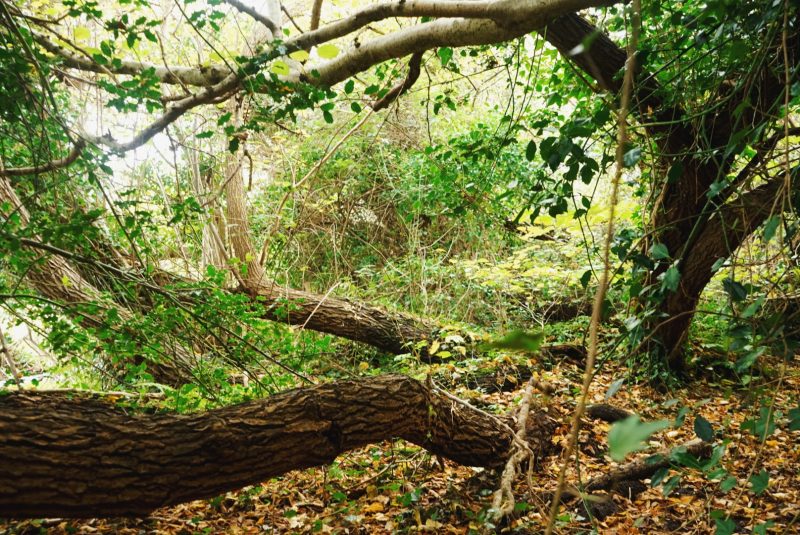
In the presence of ancient trees: here, a gnarled old hazel
I was lucky to explore the weird and wonderful world of a native Irish woodland. Dainty flowers, rare grasses, gnarly old trees and fungi galore – it was magical.
I didn’t have to go far to find this beautiful riparian woodland that time and planners forgot. For this wild wood is literally on my doorstep, nestled among houses and new estates under construction between Greystones and Delgany, Co Wicklow. One last pocket of untouched nature along the humble Three-Trout stream, in an increasingly built-up environment.
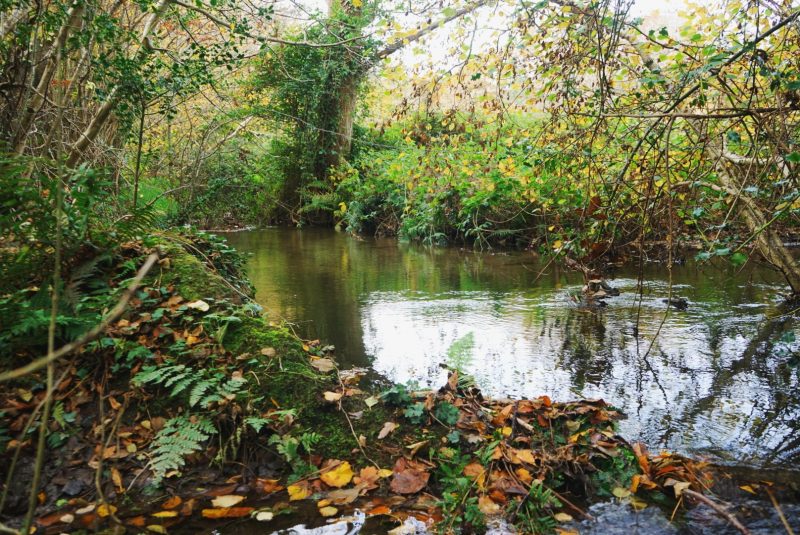
Three-Trout stream
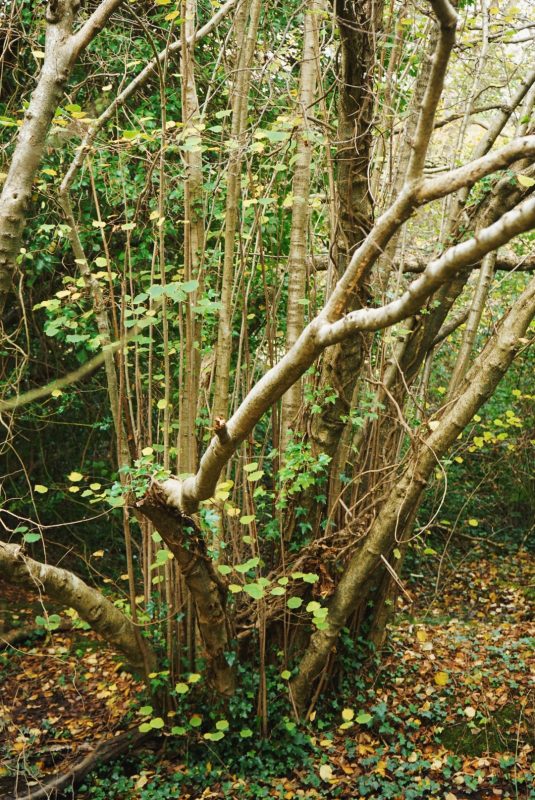
Hazel tree
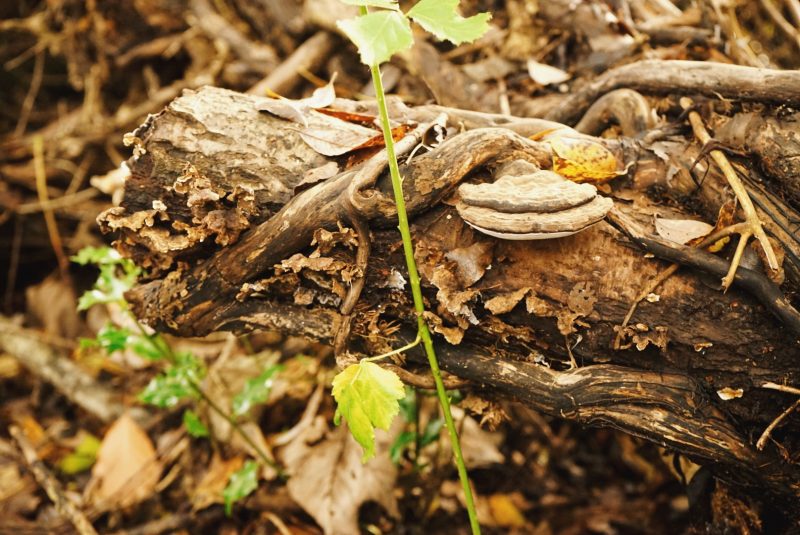
Hoof fungus (on the right), also called tinder mushroom because it can be used to start a fire
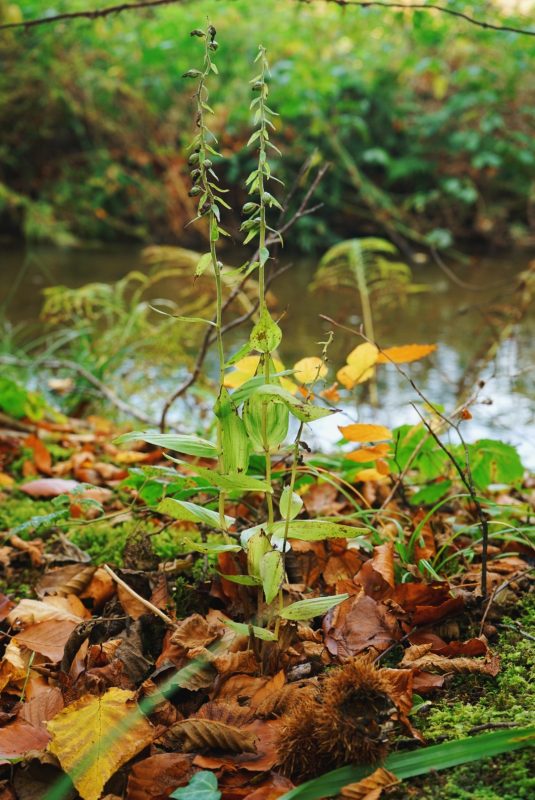
Broadleaved helleborine, an orchid never so far recorded in this part of Ireland
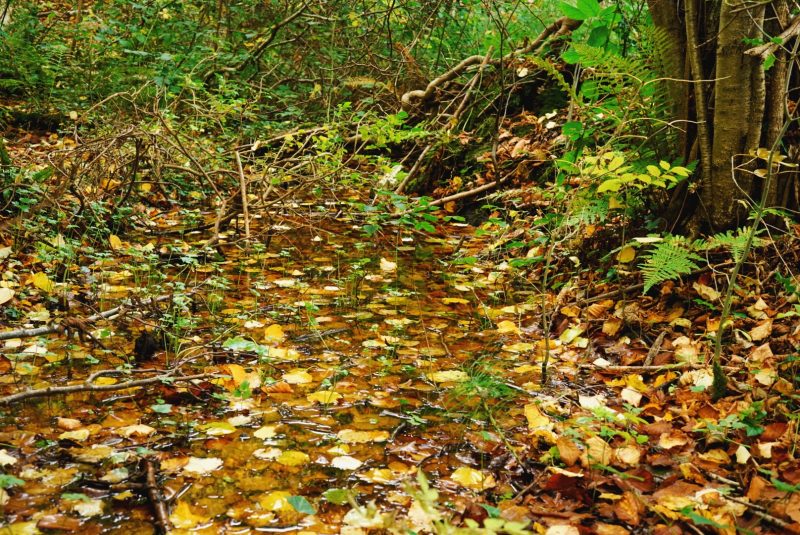
Riparian woodlands harbour tree species that thrive in waterlogged soils: hazel, willow, birch, alder, etc.
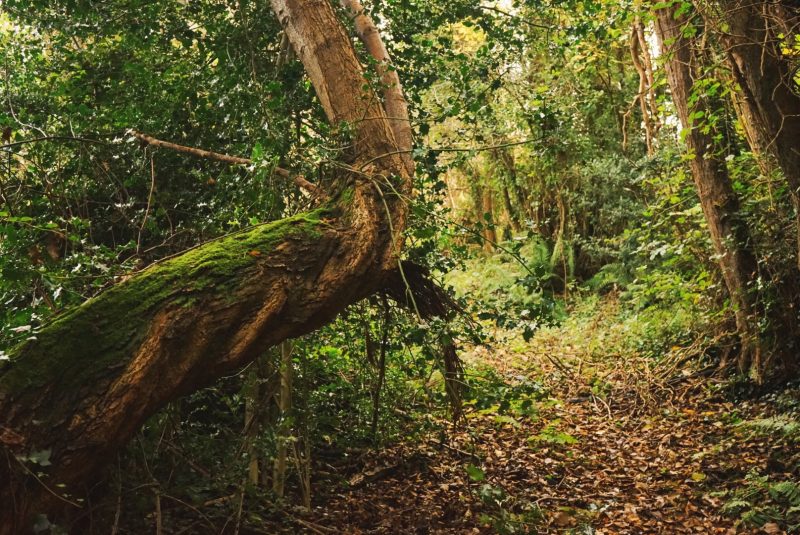
Cable-knit bark
Time and planners may have forgotten it so far, but it is now under threat, and with it, all the trees, plants and animals that make it their home – birds, bats, bees and many more.
Plans are underway to build a so-called greenway alongside the stream, which of course means felling most of the existing trees and concreting over the understory.
Yet this miraculously preserved woodland has the potential to become a wonderful nature reserve, for current and future generations. Now is the time to stand up for it, in order to keep it, protect it and grow it.
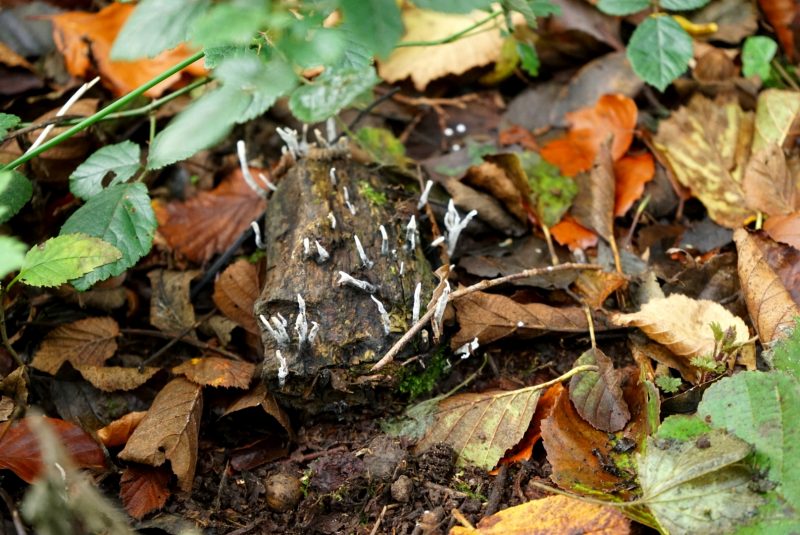
Candlesnuff fungi
The next Renaissance
The other night I was watching Star Trek: Discovery with Brian. Well, he was watching it, and I happened to catch the end of an episode.
In it, Captain Saru talks about Giotto, a 14th-century Italian artist who, through his painting, guided the world out of the dark ages and into the Renaissance.
On hearing those words, a thought immediately popped into my head.
We need to bring about the next Renaissance.
There is little doubt that we are living through the dark ages. Much like in late medieval times, the world is ravaged by unending conflicts, violent upheavals and relentless destruction. Heck, we even have a plague to contend with – covid-19, anyone?
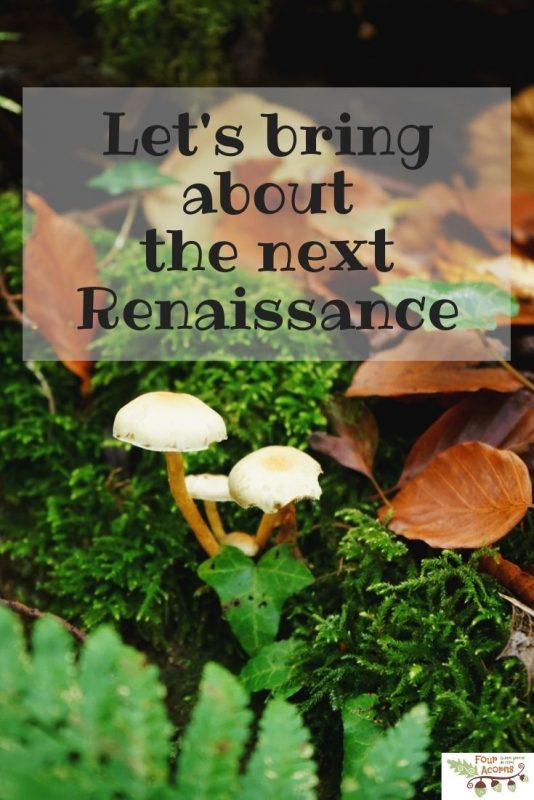
Giotto broke free of the stale Byzantine school of painting and in doing so, he created a new way of seeing. He “brought back to light an art which had been buried for centuries”, wrote Giovanni Boccaccio, a writer and contemporary of the first Italian master.
The Renaissance was a fervent period of European cultural, artistic, political and economic “rebirth” following the Middle Ages.
Much like in the Middle Ages, we need to look to the artists, the creators and the visionaries to bring about the next Renaissance. Unleash the power of creativity and imagination and break free from the current culture of domination and separation. Change the story. Humans make sense of the world around them through stories. We need to change the story of who we are and of our place in the world.
We cannot solve our problems with the same thinking we used when we created them.
Albert Einstein
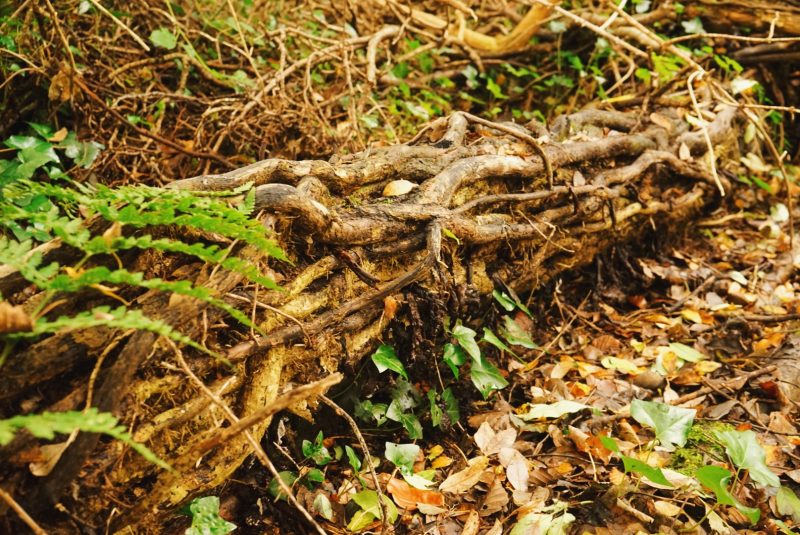
Dead wood, sometimes called “nursing logs”, is crucial to a thriving forest ecosystem
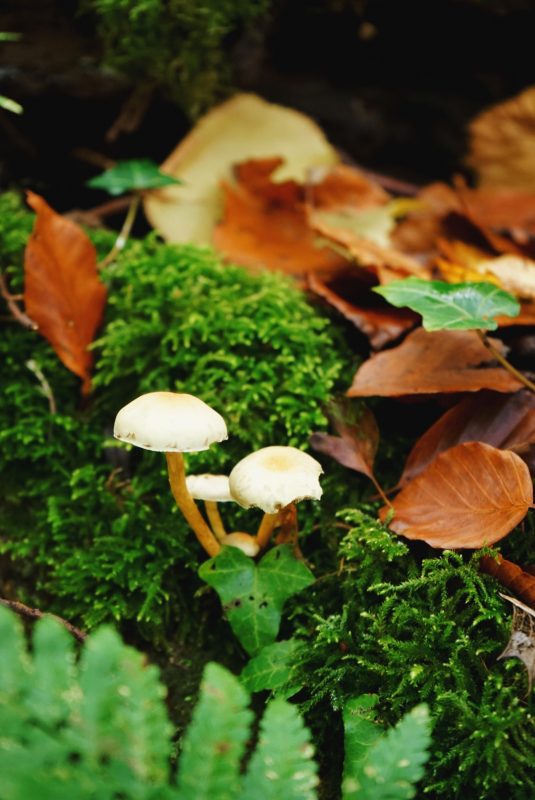
One such visionary is Eoin Llewellyn. An artist and modern painting teacher, he thought he would try to save from obliteration a small patch of nature on his doorstep in Greystones. This patch happens to be the Three-Trout riparian way.
Greystones is currently undergoing a frenzy of development, with new housing estates approved and planted in every available field left. Not only is the infrastructure (roads, public transport links, schools, heathcare, etc.) not keeping up, but nature is taking a huge hit.
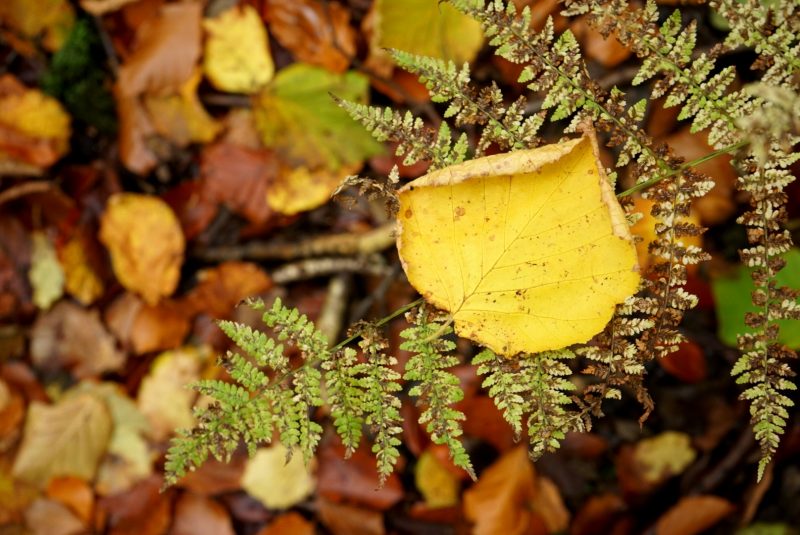
By contrast, Eoin’s vision is a brand new nature reserve for Greystones and Delgany – a gift to current and future generations.
The Three-Trout River Valley Nature Reserve would of course protect and preserve whatever woods, meadows and wetlands are left. But it would also link them up, something that is crucial for wildlife to thrive, and extend those pockets of nature by planting new native woodlands.
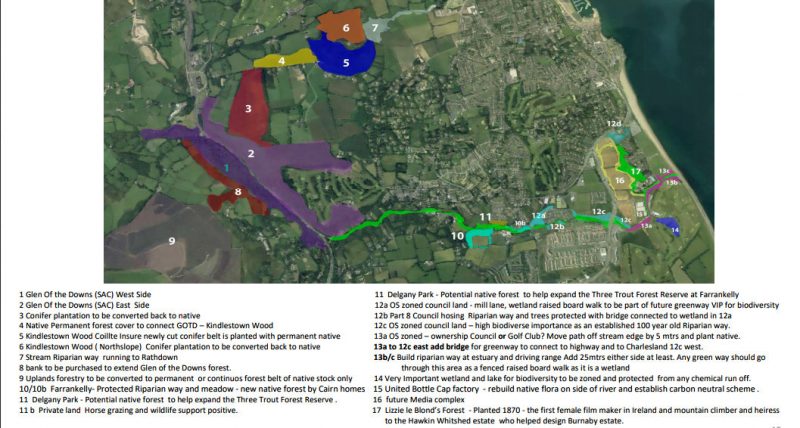
The Three-Trout River Valley Reserve, stretching from the South Beach in Greystones (13b & 13c on the map above) all the way back inland to the Glen of the Downs (1&2), through a fully protected and restored Three-Trout stream. In time, the forests of the Glen of the Downs (2&3) and Kindlestown Wood (5&6) would be joined by planting a new native woodland (4) between them, and linked to the North Beach, at the other end of Greystones, through another riparian corridor (7).
If this new nature reserve was to see the light of day, Greystones and Delgany would be wrapped in a cocoon of native woodlands teeming with life. At a time when successive lockdowns have highlighted the dire need for green spaces near urban centres, this could become a flagship example of a town living in harmony with nature, and a template to be replicated across the county and country.
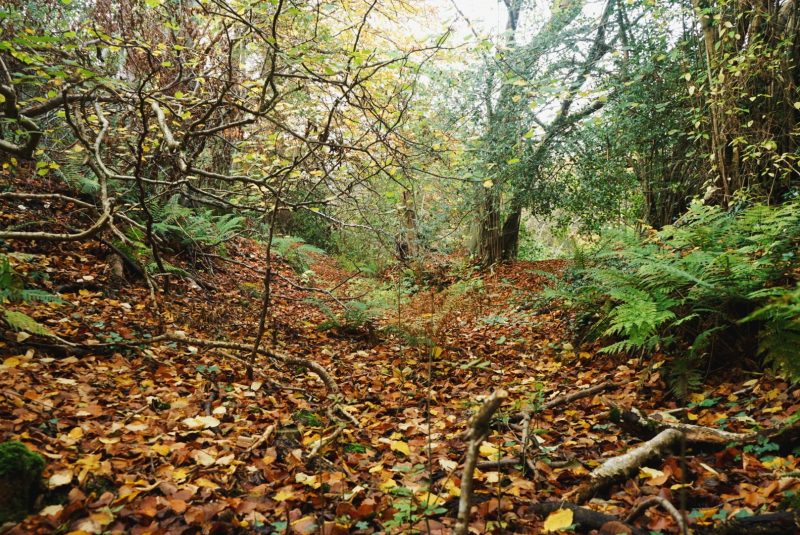
Experiencing the magic of native Irish woodlands
It only takes a leisurely walk through the Three-Trout riparian woodland, like I did this week, to understand that building a wide greenway with tall lights in this location represents an act of war against nature.
It only takes a walk through it to see and feel how special this natural enclave is.
It only takes a walk through it to experience the peace of wild things.
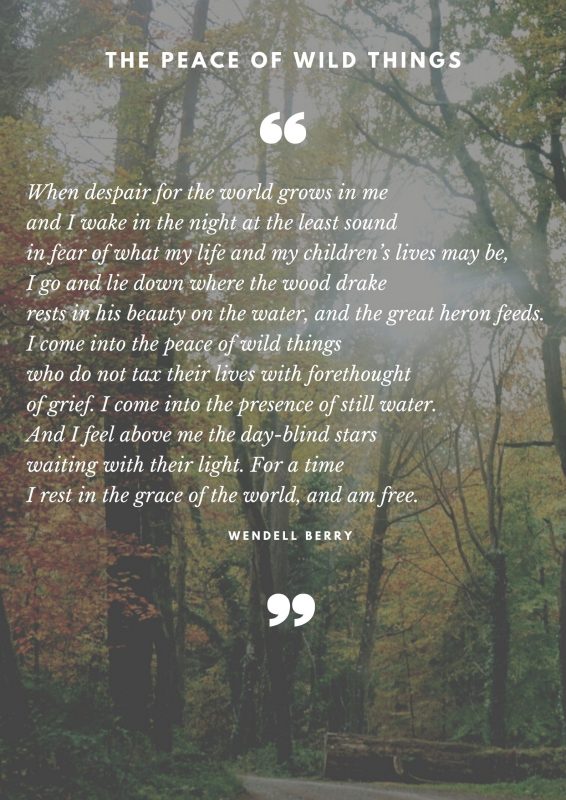
You can find out more and support the project on Guardians of the Three-Trout Stream.
Related
- Trees are poems that the Earth write upon the sky
- There is no place like Earth
- Can you hear the trees fall in Kindlestown?
- Let’s plant a tree, or twelve
- Discovering the Bee Sanctuary of Ireland
Disclosure: This post contains some affiliate links. Should you choose to make a purchase after clicking on one of them, I may receive a small commission and your purchase will help support this site.








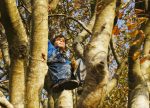 Previous Post
Previous Post Next Post
Next Post